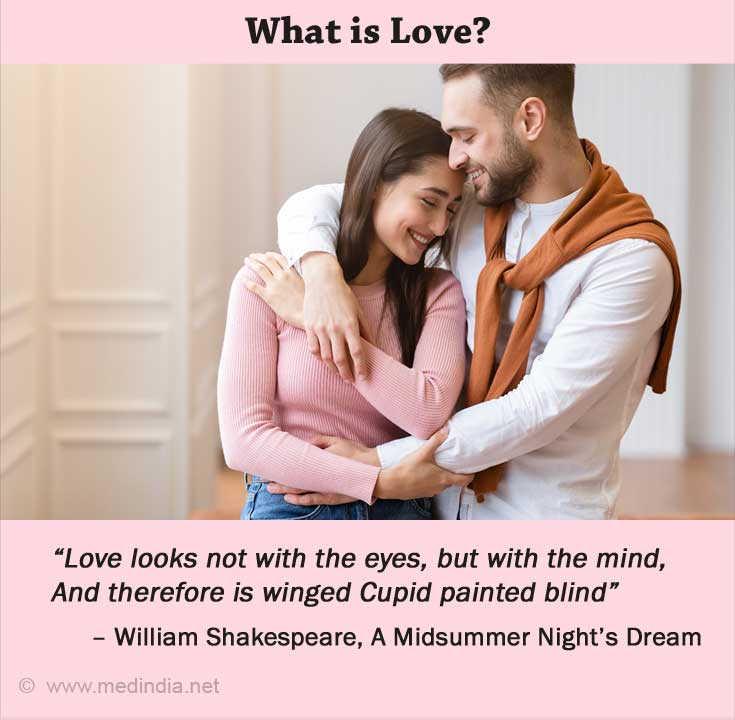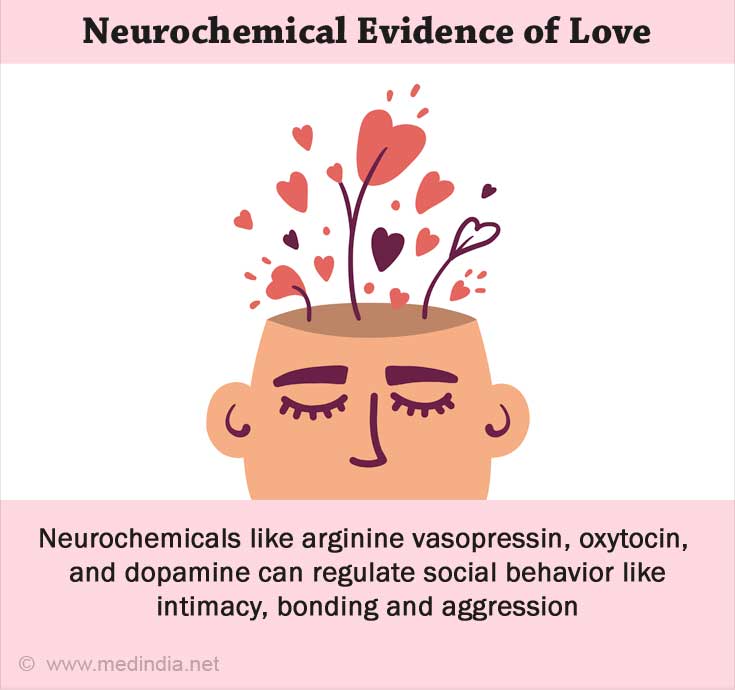- 20 Shakespeare Quotes About Love - (https://shakespeareandbeyond.folger.edu/2021/02/02/20-shakespeare-quotes-about-love/)
- The neuroendocrinology of love - (https://www.ncbi.nlm.nih.gov/pmc/articles/PMC4911849/)
- Definition of Love - (https://www.merriam-webster.com/dictionary/love)
- Falling in love: Prospective studies of self-concept change. - (https://psycnet.apa.org/doiLanding?doi=10.1037%2F0022-3514.69.6.1102)
- Love - Wikipedia - (https://en.wikipedia.org/wiki/Love)
- Falling in love: Prospective studies of self-concept change - (https://psycnet.apa.org/doiLanding?doi=10.1037%2F0022-3514.69.6.1102)
- Fisher, H. (2005). Why we love: The nature and chemistry of romantic love. Macmillan. - (https://psycnet.apa.org/doiLanding?doi=10.1037%2F0022-3514.69.6.1102)
- Hormonal changes when falling in love - (https://pubmed.ncbi.nlm.nih.gov/15177709/)
- Testosterone and aggressiveness - (https://pubmed.ncbi.nlm.nih.gov/15795710/)
- The effects of stress on social preferences are sexually dimorphic in prairie voles. - (https://www.ncbi.nlm.nih.gov/pmc/articles/PMC38169/)
“Love is not love
Which alters when it alteration finds,
Or bends with the remover to remove:
O no! it is an ever-fixed mark
That looks on tempests and is never shaken.”
– William Shakespeare, Sonnet 116
As interceded from the eras of poetry and beyond, love is often meditated as an eternally unalterable, strongest union between minds(1✔ ✔Trusted Source
20 Shakespeare Quotes About Love
Go to source).
Understanding the biological substrate behind the true bliss of romantic love and its activation in brain areas has been an ever-hunted quarry of humankind. The rollover has finally been put forth by a review study by Krishna G. Seshadri, published in the Indian Journal of Endocrinology and Metabolism(2✔ ✔Trusted Source
The neuroendocrinology of love
Go to source).
What is Love?
Love is defined as a strong affection, attraction, attachment, warmth, or devotion towards another or kinships(3✔ ✔Trusted Source
Definition of Love
Go to source). Perhaps, romantic love is often beheld as a sublime emotion, cuddled with magical bliss in one’s life.
However, love can encompass a wide range of interpersonal virtues — from deep fondness to modest pleasure, comprising of both positive and negative potentials(4✔ ✔Trusted Source
Love - Wikipedia
Go to source). Nevertheless, love can have its unbounded gist depending upon the individual’s mind, as said(1✔ ✔Trusted Source
20 Shakespeare Quotes About Love
Go to source):
“Love looks not with the eyes, but with the mind,
And therefore is winged Cupid painted blind”
– William Shakespeare, A Midsummer Night’s Dream (1.1.232-243)
Love: The Study Perspective
Romantic love is depicted as a collection of activities associated with the acquisition and retention of emotions needed to survive and reproduce, that change the individual's behavioral strategies in a way that will increase the likelihood of achieving these goals(2✔ ✔Trusted Source
The neuroendocrinology of love
Go to source).
In other words, it involves “increased energy, focused attention, obsessive following, affiliative gestures, possessive mate guarding, goal-oriented behavior, and motivation to win a preferred partner”(2✔ ✔Trusted Source
The neuroendocrinology of love
Go to source).
The study states that “love is an emergent property of an ancient cocktail of neuropeptides and neurotransmitters,” highlighting the play of distinct but intertwined brain processes mediated by neurotransmitters and circuits in love(2✔ ✔Trusted Source
The neuroendocrinology of love
Go to source).

Science Behind Evolutionary Emotion
Love is rather considered cross-cultural, universal, and associated with distinct physiological, psychological, and behavioral traits. As love is often instigated as special and unique regard to another individual, it involves the drive of focused attention, with exaggerated traits of worthiness to the opposite one(2✔ ✔Trusted Source
The neuroendocrinology of love
Go to source).
Hence, it comprises distinct amalgamations of emotion that condition-specific neuroendocrine pathways. The neural circuits of lust, attachment, and attraction (although distinctly acquiring emotions of love that operate in tandem) are thereby found to reinforce each other(2✔ ✔Trusted Source
The neuroendocrinology of love
Go to source).
Love as a Reward System
Love is rather a motivation system (and not primarily an emotion), intended to plan and pursue one’s specific want or need, in the intimate relationship with their partner(5✔ ✔Trusted Source
Falling in love: Prospective studies of self-concept change
Go to source).
This has also been evidenced by studies using functional magnetic resonance imaging (fMRI) that show the involvement of brain areas in goal-oriented motivational behavior in love.
Stress — Not a Love-Opposition
Despite stress being often illustrated as a state of negative life circumstances, in moderation it is found to boost social interaction , pleasure, and proximity in a relationship(2✔ ✔Trusted Source
The neuroendocrinology of love
Go to source).
The neurobiological state of the body thereby demands a homeostatic range of stress, activated by the physiologically higher release of stress hormone (cortisol) via the hypothalamic-pituitary adrenal axis(7✔ ✔Trusted Source
The effects of stress on social preferences are sexually dimorphic in prairie voles.
Go to source).
The stress hormone not only helps characterize the early phases of relationships but also aids in physiological alertness and overcoming neophobia (fear of novel food) in the formation of social attachment(8✔ ✔Trusted Source
Hormonal changes when falling in love
Go to source).
Apart from cortisol, other neurochemicals like norepinephrine and
The neuroendocrinology of love
Go to source).
Sexual Hormones and their Effects
Sex/gonadal hormones like testosterone are rather known to play a facilitatory mechanism as they exert developmental effects on socially driven neural systems. The sex hormone also aids in suppressing aggressiveness (towards partner) through reduced levels of serotonin (neurotransmitter)(9✔ ✔Trusted Source
Testosterone and aggressiveness
Go to source).
In addition, testosterone enhances the levels of vasopressin in a brain area — medial amygdala lateral hypothalamus, and pre-optical medial area to modulate aggressive behaviors in an otherwise complex phenomenon of love(9✔ ✔Trusted Source
Testosterone and aggressiveness
Go to source).
Functional brain imaging also revealed increased activity in a brain region of the right posterior dorsal insula (an area correlating with penile turgidity and viewing of beautiful faces) and regions of visual stimuli integration — quoting men to appear more responsive to visual signals of youth and beauty(2✔ ✔Trusted Source
The neuroendocrinology of love
Go to source).
Neurochemical Evidence of Love
Other neurochemical findings the study had revealed were the following(2✔ ✔Trusted Source
The neuroendocrinology of love
Go to source):
- Regulation of social behavior like sexual behavior, aggression, and bonding care is found to be driven by neurochemicals like arginine vasopressin (AVP), OT, and dopamine (DA) and their receptor distribution.

- Moreover increased AVP synthesis in the bed nucleus of the stria terminalis (limbic brain region) and its release in the limbic system (emotional & behavioral seat of the brain) appears to be involved in cohabitation with mating.
- OT and vasopressin receptor activation also play a role in conditioning the partner preference. Hence, bond pairing might be impaired with antagonism of the OTR.
- The addictive nature of love is known to be controlled by feedback mechanisms of the brain’s reward system — OT, AVP, and DA receptor activation and right ventral segmental area (VTA) (especially mesolimbic DA system) that ultimately results in reduced emotional judgment, fear, & depression along with enhanced mood.
- Alongside the reward pathways, endogenous opioids (involved in pain relief and euphoria) may also be involved in this process.
- Amidst this, sexual activity (increased levels of testosterone and estrogen) plays a significantly reinforcing role in the reward system in accordance with the sympathetic nervous system.
- Complex interactions and interdependence between gonadal reward and sympathetic systems also reveal the existence of overlapped reinforcing yet distinct neural networks.
- The study states that there is an elevated OT level in women during orgasm and increased AVP in men during sexual arousal, thereby driving the neuroendocrine system for sexual attraction and partner attachment.
- These attachment behaviors and pleasure pathways are engraved with the goal of repetition through hippocampal mechanisms.
- Behavioral studies however promote the existence ofdistinct yet complementary pathways for love and sex drive; sex drive can be quelled when satiated whereas love persists unabated irrespective of coitus.
Love — Complex Interplay of Brain
However, the study affirms that there is a mediation of complex yet flexible neuroendocrine networks that are required for interdependence and facilitation among individuals in love(2✔ ✔Trusted Source
The neuroendocrinology of love
Go to source).
Several studies using functional MRI have also traced the distinct pathways involved in driving this platonic relationship(2✔ ✔Trusted Source
The neuroendocrinology of love
Go to source).
Hence, the study proves a powerful stance for further research that attempts to delineate the biological basis of complex traits including fidelity, trust, and spirituality, and quantify the role of peptide therapy in modulating behavior(2✔ ✔Trusted Source
The neuroendocrinology of love
Go to source).
Nevertheless, “romantic love retains its mystique continues to tantalize it has revealed some secrets but has to manage concealed the vital,” concludes the author(2✔ ✔Trusted Source
The neuroendocrinology of love
Go to source).








